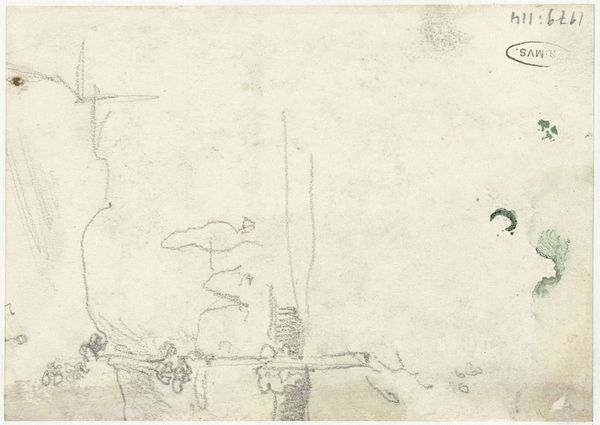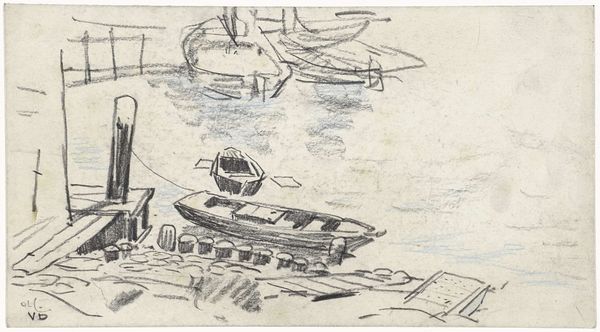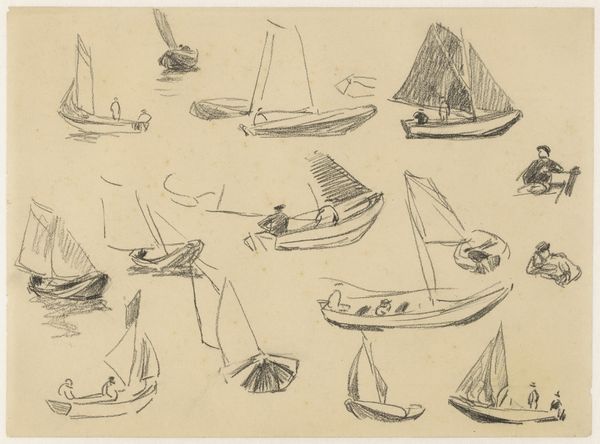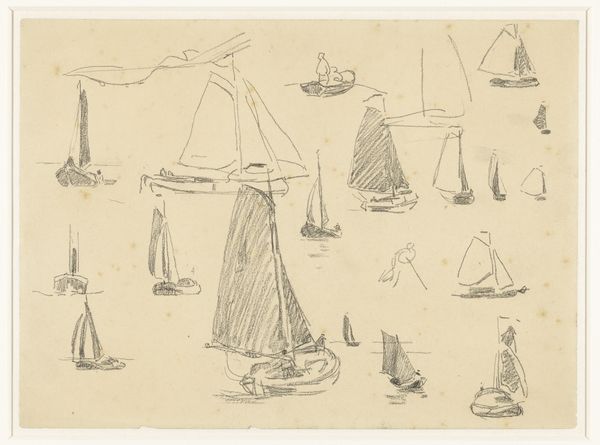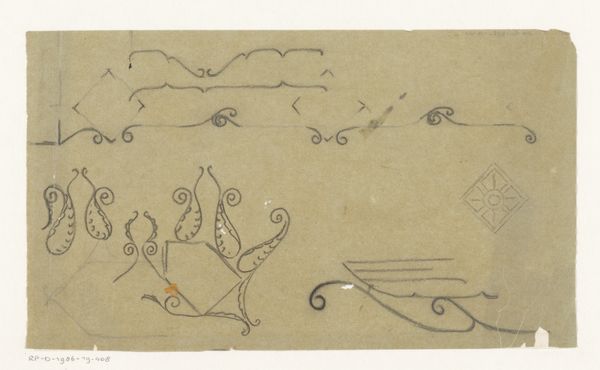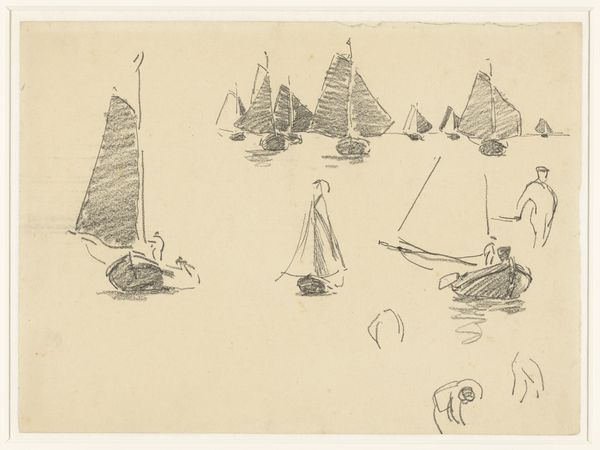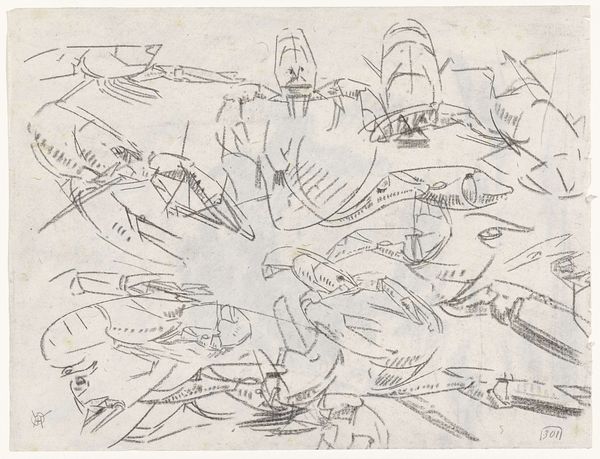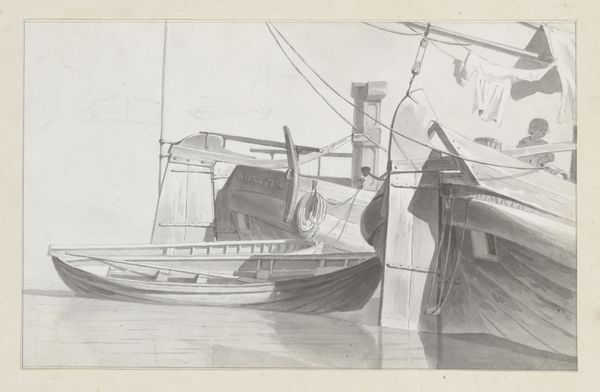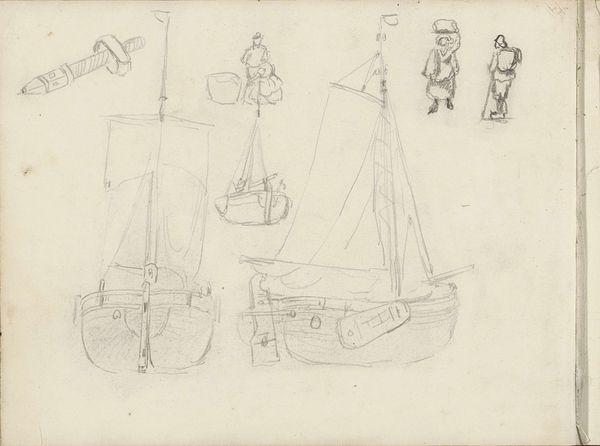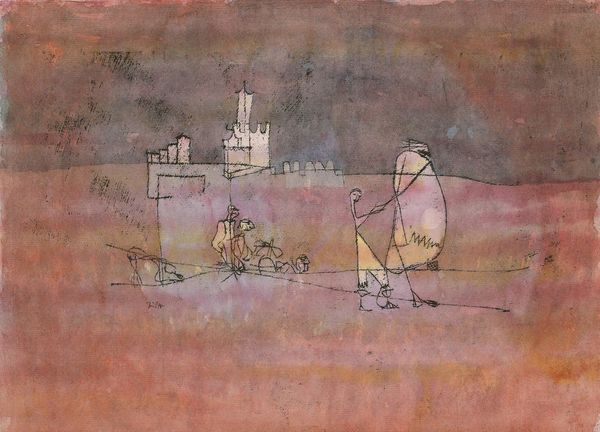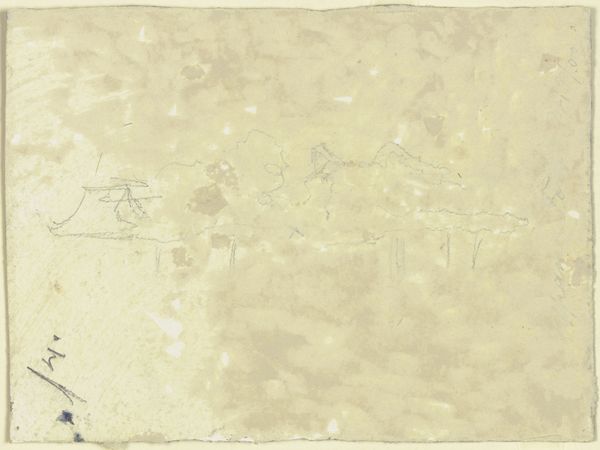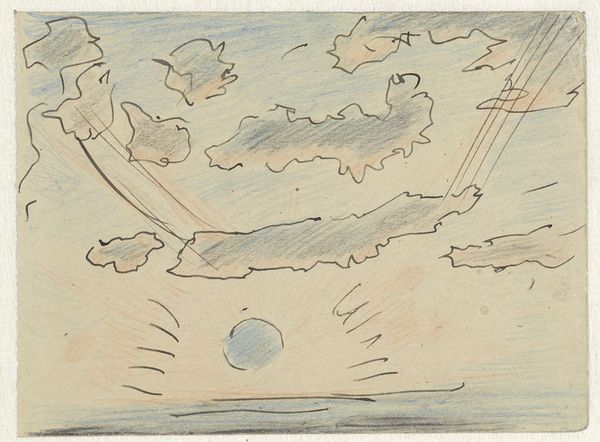
Skitsebogsblade med studier af venetianske sejlbåde. 1852 - 1855
drawing, painting, watercolor
drawing
painting
landscape
watercolor
watercolor
Dimensions: 104 mm (height) x 176 mm (width) (bladmaal)
Editor: This is "Skitsebogsblade med studier af venetianske sejlbåde" – or "Sketchbook pages with studies of Venetian sailboats" – by P.C. Skovgaard, made sometime between 1852 and 1855 using drawing, painting, and watercolor. It's quite charming, almost like a collection of quick notations. The boats are stylized with unique sails; it’s less about realism, more about shape and pattern. What strikes you when you look at this piece? Curator: The artist's emphasis appears to be on the interplay of forms and the exploration of pictorial space. Consider the composition. We observe various sailboats, each rendered with different shapes and ornamental markings. The application of watercolor, a medium known for its translucency, is applied in a deliberate manner, generating an overall impression of lightness and openness. Notice how the artist uses line and wash to define the boats against the blank paper, rather than relying on heavy outlines or shading. It begs the question: what does the reduction of sailboats to their formal elements communicate? Editor: It makes me think about visual language—how shape and color can convey ‘boat-ness’ without strict realism. I'm wondering, though, is there an attempt at representation here? Is it purely about abstract arrangement? Curator: Ah, the essence of formalism! The represented sailboats invite contemplation of shapes and surface – an exercise of pictorial syntax. Skovgaard isolates the visual experience of sailing in a semiotic structure. Consider how variations in the lines defining the hulls influence spatial arrangement of the vessels – lines that indicate both location and bearing. Notice, furthermore, how individual figures activate the relationship between the composition of line, watercolor wash, and surface tension, thus evoking a certain dynamism and directionality of design within a finite spatial volume. Can we not simply agree on how shapes are designed so the water vessel *suggests* motion? Editor: I see that now! Thinking about form over explicit representation unlocks another level of understanding. Curator: Precisely. It's about discerning the underlying structure that generates the work's visual impact. This allows one to think and learn while seeing! Editor: I'll definitely look at art differently from now on. It opens a new approach to observation.
Comments
No comments
Be the first to comment and join the conversation on the ultimate creative platform.

